 |
CHAMÄLEON + ONJALA OBSERVATORY DeepSky | SITEMAP HOME CHAMÄLEON |
|
 |
|||
| « back to overview Nebulae |
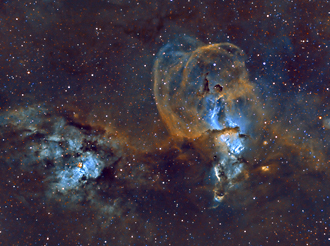 |
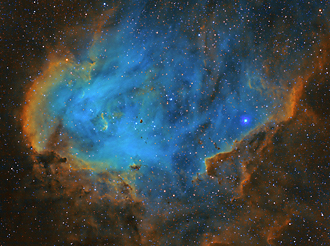 |
 |
| NGC 3603 und 3576 H-SHO |
IC 2944/48 H-SHO |
NGC 6188 und 6193 H-SHO |
- HOO: The red channel is assigned to the hydrogen alpha signal, the green and blue channel to the oxygen III signal. This results in a coloration that comes very close to the original object colors of the gas nebula.
- SHO: This is the classic Hubble palette. The red channel is assigned to the sulfur II signal, the green channel to the hydrogen alpha signal and the blue channel to the oxygen III signal. Since the image initially appears predominantly greenish, the intensity of the green channel is significantly reduced during image processing, resulting in a very harmonious color distribution that the human eye can differentiate very well. Unfortunately, with this procedure all stars are shifted into a pink hue, which looks not very good. However, this can be corrected with a few processing steps.
- H-SHO: The procedure is the same as for SHO, but the resulting image only serves as chrominance information. The luminance is represented by the hydrogen alpha signal which often includes the most details due to its overwhelming proportion in the gas nebula. If the SHO chrominance signal is modulated with the image of the hydrogen alpha, the result is an extremely sharp and detailed image, which contains the color distribution of the Hubble palette and is "conclusive" for the human eye.
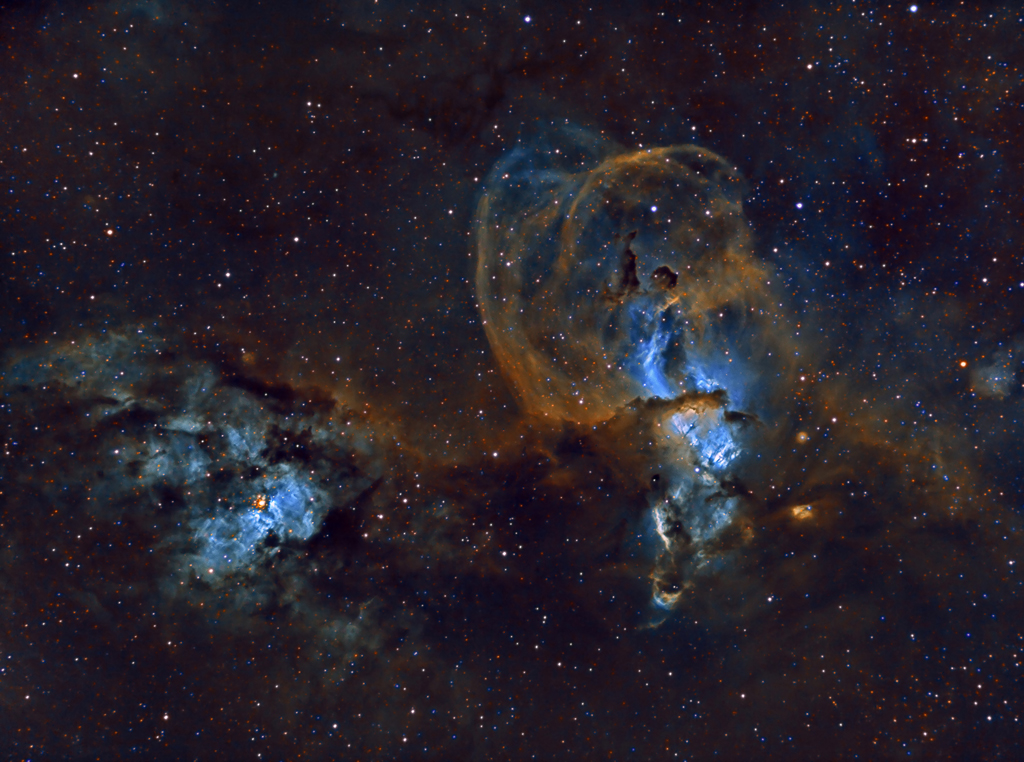
Image data - Exposure: 18x180s H-alpha, je 16x180s SII,OIII, Filter: Astrodon 3nm, Camara: ASI 1600-MMpro, Telescope: 6" Zeiss APQ - f/8
An object description about NGC 3603 und NGC 3576 can be found here ...
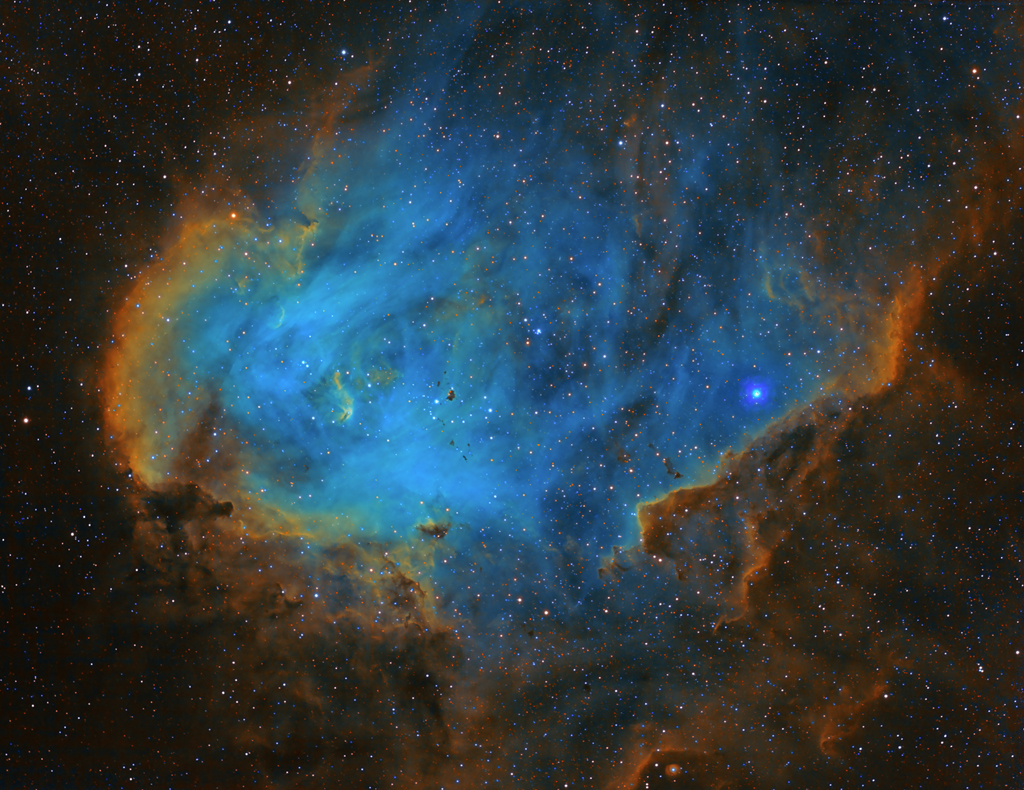
Image data - Exposure: 17x220s H-alpha, je 14x220s SII,OIII, Filter: Astrodon 3nm, Camara: ASI 1600-MMpro, Telescope:: 105mm Pentax - f/6
An object description about IC 2944 und IC 2948 can be found here ...
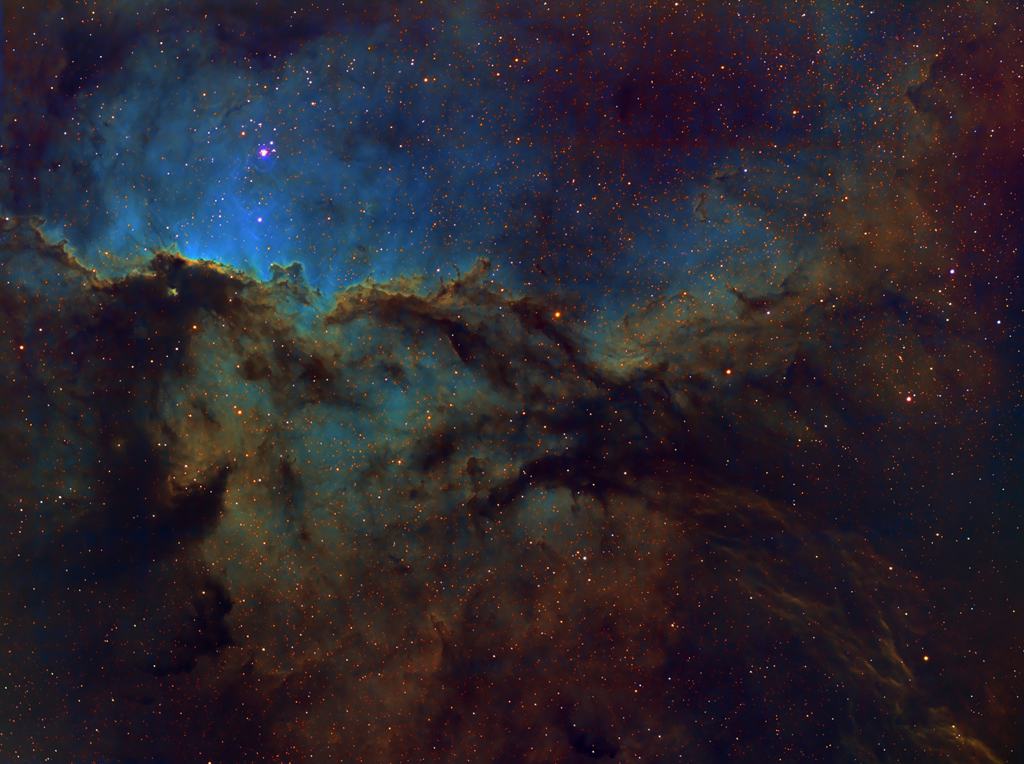
Image data - Exposure: 18x220s H-alpha, je 14x220s SII,OIII, Filter: Astrodon 3nm, Camara: ASI 1600-MMpro, Telescope:: 105mm Pentax - f/6
An object description about NGC 6193 und NGC 6188 can be found here ...
 |
 |
 |
 |
 |
 |
 |
| Sun | Moon | Solar System | DeepSky | Widefield | Miscellaneous | Spec. Projects |